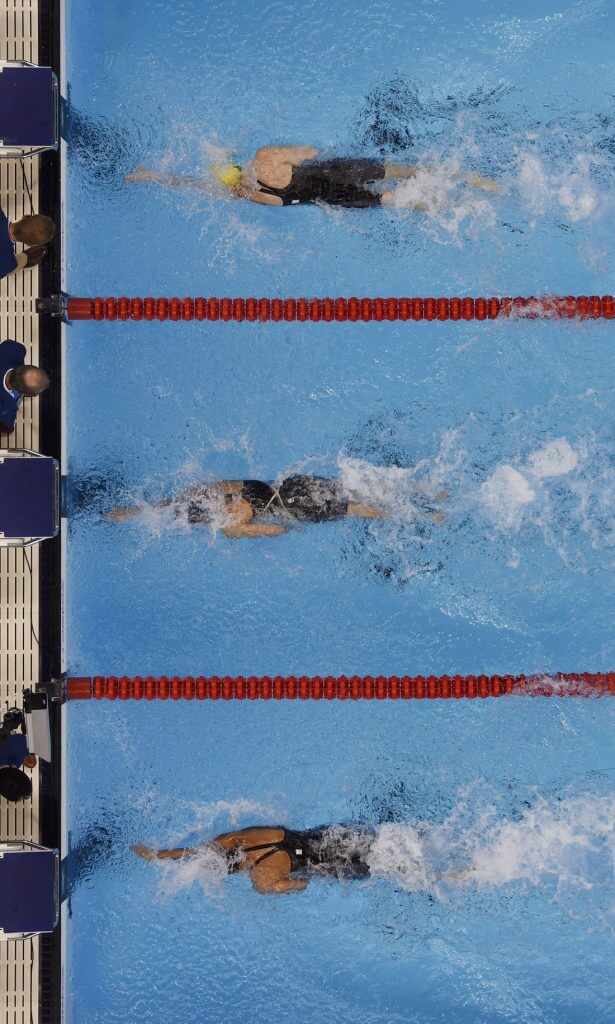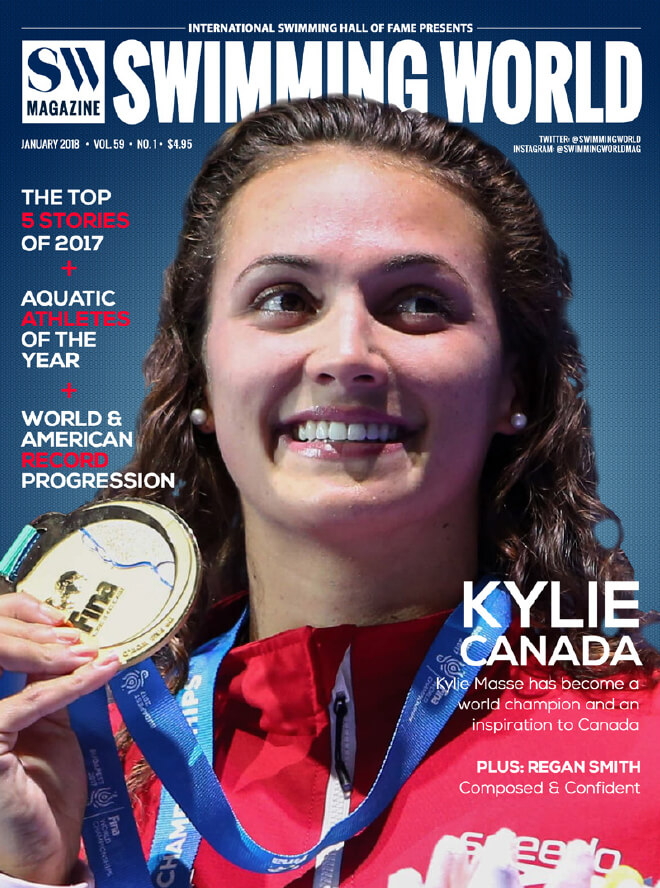Swimming World Presents “Technique Misconceptions: Science is Risky”

Many people believe that it is worth copying the technique of the fastest swimmers. In reality, even the fastest swimmers have technique limitations, but they offset them with strength and conditioning. The purpose of this series of articles is to address scientifically the technique misconceptions that have become “conventional wisdom,” and to present options that are more effective.
For the past four years, Dr. Rod Havriluk has been writing this series of articles on swimming technique misconceptions. The purpose was to show limitations with current practices based on conventional wisdom (CW) and to offer alternate (unconventional) methods supported by science. He has covered such topics as technique, training strategies, concepts of perception, and more.
The immediate goals were to raise awareness about how science can improve swimming performance and to promote dialogue about technique. The ultimate goal was to change the approach of the swimming world to value science at least as much as experience. It’s entirely possible that a very basic misconception—that science is risky—causes resistance to such a culture change.
Dr. Rod Havriluk is a sports scientist and consultant who specializes in swimming technique instruction and analysis. His unique strategies provide rapid improvement while avoiding injury. Learn more at the STR website, or contact Rod through info@swimmingtechnology.com.
To learn more about how science in swimming can be risky, check out the January 2018 issue of Swimming World Magazine, available now!

[PHOTO BY SIPA USA]
Get Swimming World Magazine When You Become A Member of the International Swimming Hall of Fame
Want More? Subscribe With This Special 3-Year Offer! Swimming World Magazine gives you access to all of the back issues of Swimming World Magazine dating back to 1960! Visit the Swimming World Magazine Vault.
Order a single “Collectors” issue print copy here or download a single .pdf copy here.
FEATURES
018 2017 ATHLETES OF THE YEAR
by Taylor Brien, Erin Keaveny and Michael Randazzo
Diving: Shi Tingmao & Ilya Zakharov
Water Polo: Maggie Steffens & Márton Vámos
Synchro: Svetlana Kolesnichenko
Disabled: Sophie Pascoe & Vincenzo Boni
020 TOP 5 STORIES OF 2017
by David Rieder
023 THE GREATEST AMERICAN WOMAN SWIMMER YOU’VE NEVER HEARD OF!
by Bruce Wigo
She’s not in the International Swimming Hall of Fame. Until recently, the Hall didn’t even have a file on her. Yet for most of the decade of the 1940s, Nancy Merki was the most famous female competitive swimmer in America.
026 A PERFECT FIT
by David Rieder
Before last summer’s World Championships in Budapest, 15-year-old Regan Smith had doubted her place on U.S. team trips, questioning if she really deserved to be there. After her quick transition from wide-eyed rookie to composed and confident World Championship finalist, she knows now that she definitely belongs.
030 MAKING AN IMPACT
by Annie Grevers
Canada’s Kylie Masse is a world record holder in the 100 meter backstroke and the first Canadian female swimmer ever to win a world title, and she realizes the importance—and privilege—of motivating young Canadian swimmers who now aspire to be like Kylie.
034 2017 WORLD & AMERICAN RECORD PROGRESSION
by Taylor Brien
036 NUTRITION: AROUND THE TABLE WITH NATHAN ADRIAN
by Annie Grevers and Dawn Weatherwax
Raw, stragegic, consistent—words that describe Nathan Adrian…and his diet! To have power, a swimmer needs premium fuel in their tank. Adrian recently shared a few typical post-practice meals with Swimming World.
COACHING
010 LESSONS WITH THE LEGENDS: JACK ROACH
by Michael J. Stott
013 COLLEGE RECRUITING: SOCIAL MEDIA AND EARLY COMMITMENT
by Michael J. Stott
In the third of a multi-part series, Swimming World looks at early commitments and the way social media is altering (for better or for worse) how prospects are navigating the college recruiting process.
016 SWIMMING TECHNIQUE MISCONCEPTIONS: SCIENCE IS RISKY
by Rod Havriluk
According to conventional wisdom, performance—not science—is the ultimate criterion measure. Unfortunately, this approach guarantees staying in the past and requires being satisfied with relatively small improvements. Applying science, on the other hand, may seem risky, but offers the potential for much bigger improvements much sooner.
041 Q&A WITH COACH LARS JORGENSEN
by Michael J. Stott
042 HOW THEY TRAIN DANIELLE GALYER
by Michael J. Stott
TRAINING
033 DRYSIDE TRAINING: “FAST START” TO THE NEW YEAR
by J.R. Rosania
JUNIOR SWIMMER
045 UP & COMERS
by Taylor Brien
COLUMNS
008 A VOICE FOR THE SPORT
047 GUTTER TALK
048 PARTING SHOT



